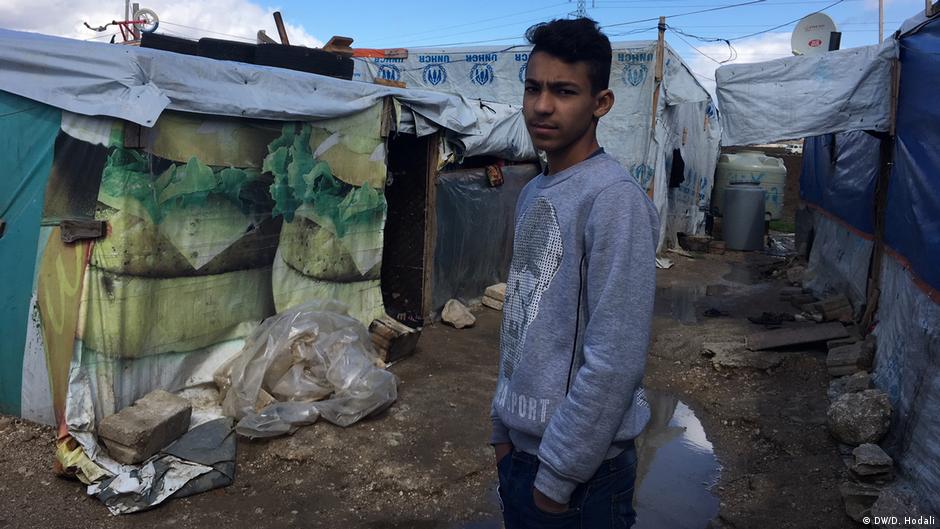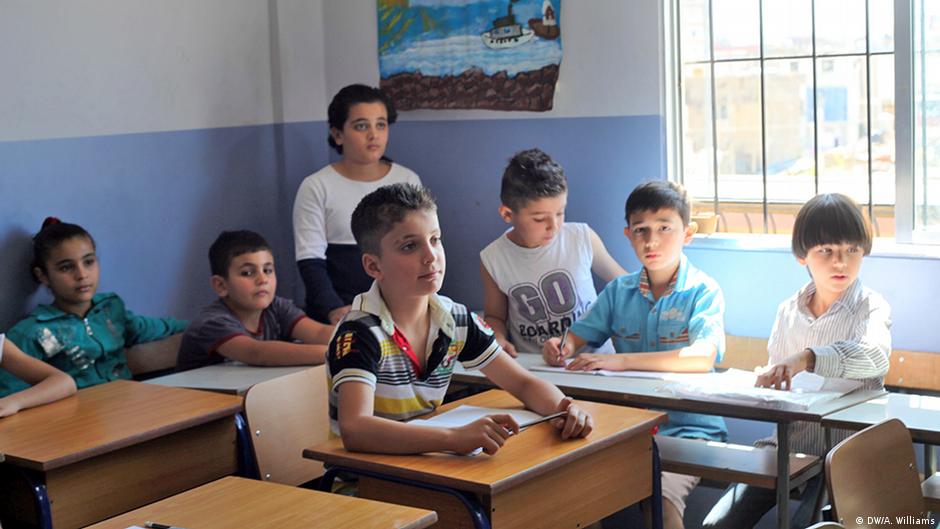No education for this generation?

Omar Khodr fled from Syria to Lebanon with his family ten years ago. He lives in Bar Elias, a small town in the Bekaa Valley, in the country’s east. Over 300,000 Syrians have found refuge in this region. Khodr’s children are an illustration of the disastrous educational situation of Syrian children and young people in Lebanon. None of his six children, who range in age from seven to 20 years old, has ever attended a regular school.
Instead, they took advantage of a few informal educational opportunities provided by civil society organisations, typically in tent schools for various age groups. Most of these offerings are not recognised by Lebanon’s Ministry of Education. As a result, pupils do not receive valid school certificates or credentials that would allow them to take secondary school examinations. Nor do they qualify for secondary school education.
A lack of places
Khodr, whose name has been changed to protect his anonymity, cannot afford private schools. The father of six has repeatedly attempted to enrol his children in Lebanese state-run schools that offer evening classes for young Syrian refugees. He has always been turned away with the justification that the classes are full.
Khodr doesn’t doubt this explanation, since the schools in the small town of Bar Elias are not equipped to deal with thousands of new arrivals. What’s more, Lebanon’s state-run schools require documents that he, as a refugee, cannot procure outside Syria.

According to Khodr, during the pandemic-induced lockdown, those teaching at the informal schools tried to conduct classes via WhatsApp. It didn’t really work, , he says. Many Syrian refugees can afford neither laptops nor a powerful Internet connection.
Education for Syrian children and young people is one of the biggest challenges confronting the Lebanese government and the international community. It is now more than a decade since Syria’s civil war broke out and hundreds of thousands of Syrians fled into neighbouring Lebanon. As a result, the educational level of this generation is disastrously low and their future prospects correspondingly dim.
Education programme
During the first few years following the outbreak of the civil war, civil society organisations paid the admission fees for Syrian pupils to attend state-run Lebanese schools. The number of Syrian children quickly exceeded capacity, however. In response, the R.A.C.E. (Reaching All Children with Education in Lebanon) programme was launched in 2014. Its goal was to secure schooling for 500,000 Syrian children in Lebanon.
The programme, financed by the international community, envisaged evening classes for Syrian children and youth at state-run schools according to the Lebanese curriculum. Donors paid admission fees to the Lebanese Ministry of Education via the United Nations Children’s Fund (UNICEF). Financing was also provided for maintenance costs and teachers’ wages.
Over the years, the R.A.C.E. programme, which ended in 2021, became the subject of severe criticism. The Lebanese NGO Legal Agenda, for example, declared it a failure. Legal Agenda bases its assertion on numerous sources, including the United Nations High Commissioner for Refugees (UNHCR), which claims that in 2021, a third of Syrian children between the ages of six and 17 did not attend school.
Only 11% of 15 to 24-year-olds have begun vocational training. According to the Center for Lebanese Studies (CLS), just one percent of pupils completed secondary school in 2019. These figures are likely to be even lower now given the pandemic and the ongoing global economic crisis.
Fear for children’s safety
Khodr knows most of the many reasons for these low rates. He says that many Syrians do not have enough information about the learning programme that has been established for them at Lebanese state-run schools. Another obstacle, he believes, are the evening classes: parents are reluctant to send their children to school in the afternoon, because they worry about their safety on the way home after dark. According to Khodr, families also lack the money for transportation. Finally, he points out that children are often sent to work in the fields to help support their families.

A survey conducted by the CLS with Syrian pupils in Lebanese schools also revealed that the vast majority of respondents have difficulties with English and French, the languages in which science classes are taught. The survey also discovered that refugees’ living conditions played a role: overcrowded dwellings and financial distress are clear impediments to learning.
State and private sector need to cooperate
Maha Shuayb from the CLS is calling for a long-term, comprehensive and integrative programme that doesn’t force Syrians to the margins of society but rather respects their rights. After all, the researcher claims, learning is not just about combatting illiteracy, but also facilitating participation in the labour market in the longer term.
Fighting poverty is just as important as expanding the capacity of state-run schools, Shuayb says. In order to implement this approach, given the crisis in Lebanon, she believes that an alliance is needed between the public and private education sector on the one hand and civil society on the other.
In the summer of 2022, Lebanon’s Ministry of Education introduced a successor programme to R.A.C.E., the Transition Resilience Education Fund (TREF). To what extent this is a first step in the direction Shuayb sketched out remains to be seen. The TREF is directed equally at Lebanese and non-Lebanese children and youth.
The programme is being implemented in cooperation with UNICEF; the EU and KfW Development Bank are also involved. It aims to pay greater attention to the quality of instruction and respond more flexibly to the needs of Syrian pupils.
© D+C | Development & Cooperation 2023
Further reading: